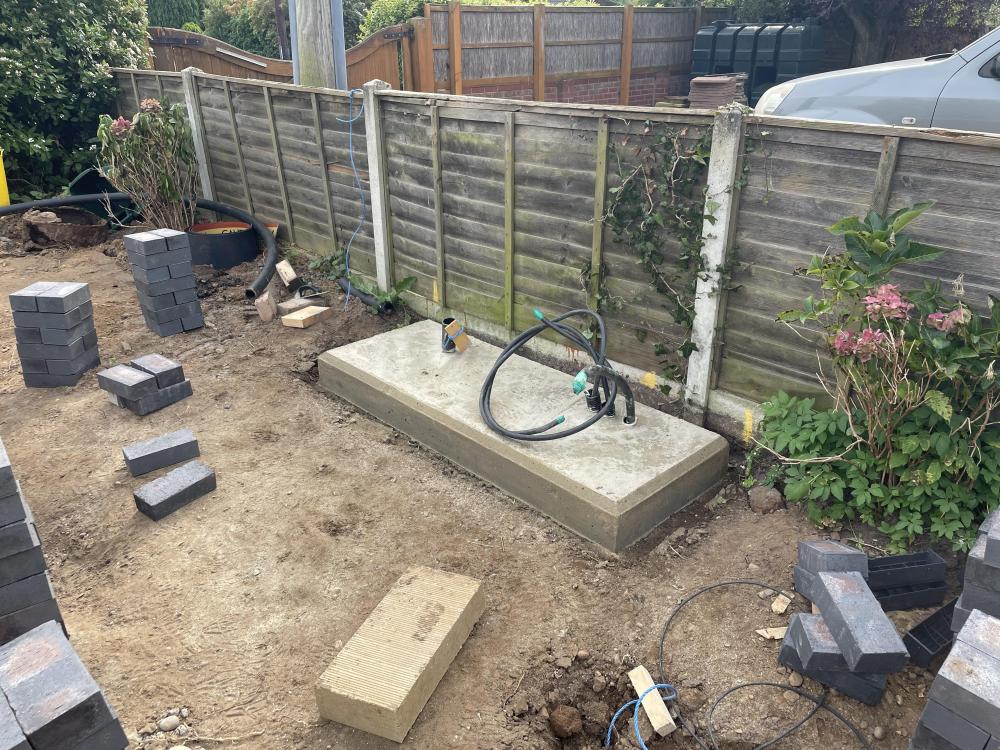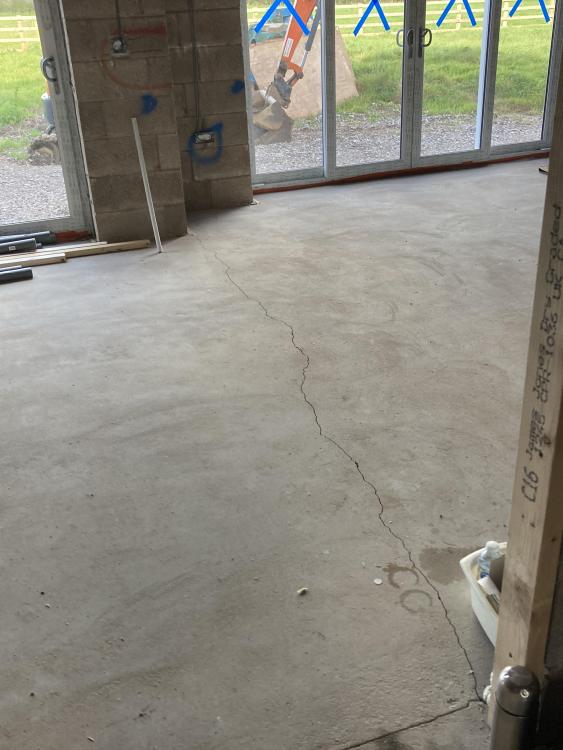Leaderboard
Popular Content
Showing content with the highest reputation on 10/15/23 in all areas
-
1 point
-
not sure whether to laugh or cry at this one! well done for just doing it though. that happens a lot.1 point
-
The window head looks damp. Is there a trickle vent at the top of the window? If not, install one as you need proper ventilation. Line the window reveal (top and sides) with insulated plasterboard. Look outside and make sure that no water can get into the wall.1 point
-
Environment Global power sector has almost hit peak greenhouse gas emissions This year could have been the beginning of the end for emissions from generating electricity, were it not for a drought that saw a fall in hydropower generation 5 October 2023 Listen to this article By James Dinneen Hydropower was hit by droughts this year Evgeny_V/Shutterstock Global greenhouse gas emissions from generating electricity would already be on the decline this year, were it not for drought – itself potentially caused by climate change – leading to a shift away from hydropower to fossil fuel generation in China, the US and India. “The world is teetering at the peak of power sector emissions,” says Malgorzata Wiatros-Motyka at Ember, an energy think tank in the UK. Generating electricity by burning fossil fuels is the largest single source of carbon emissions, responsible for around 40 percent of the global total. The rapidly rising share of renewable energy in the mix has led to forecasts that power sector emissions would peak as soon as this year, an important milestone towards decarbonisation. But the peak hasn’t yet been reached. Wiatros-Motyka and her colleagues counted emissions from the power sector using data on electricity generation through the first half of 2023, looking at 78 countries representing 92 per cent of electricity demand. They estimated emissions for the remaining countries based on historical data. According to their report, a substantial jump in wind and solar generation, as well as lower demand for energy, led to a decrease in emissions in several countries. This included a 17 per cent decline in the European Union, a 12 per cent decline in Japan and an 8.6 per cent decline in the US. Emissions in India rose by 3.7 per cent, though at less than half the rate of the same time last year. However, the reductions were offset by a 7.9 per cent increase in emissions from China’s power sector. Despite the country’s grid starting 2023 with emissions below those of last year, severe drought and heat waves saw China’s hydropower generation drop to record lows, prompting an increase in coal generation. Read more Why China's clean energy tech will determine our climate future Drought in the US, India and several other countries also drove a global decline in hydropower generation of 8.5 per cent, in what could be a historically bad year for hydropower. “Despite adding more hydro capacity, generation capacity factors of hydro are not going up,” says Wiatros-Motyka, pointing to climate change as a possible factor behind shifts in the water cycle that reduce hydropower. ”We don’t know why it is. Is it a new normal?” Minghao Qiu at Stanford University in California says he is wary about reading too much into a single-year decline, but says climate change is expected to drive changes in hydropower, even though exactly how much and where is unclear. “The magnitude of the global total change will probably be small, but hydropower supply in certain regions will decrease dramatically,” he says. Taken together, the researchers found that emissions from the global power sector remained effectively flat for the first half of 2023, increasing by just 0.2 per cent compared with the same period last year. This was despite a 12 per cent increase in wind and solar generation, as well as a fall in energy demand in several of the highest energy consuming countries due to slowing economic activity, a mild winter and energy-efficiency gains. If it weren’t for the droughts, the researchers found emissions from the power sector would have fallen by nearly 3 per cent this year. They may still reach their peak in 2023 depending on what happens with hydropower and energy demand, says Wiatros-Motyka. But even if the peak doesn’t happen this year, she says the growth of renewable energy means peak power sector emissions are almost certain to happen next year, with clean sources of electricity meeting any new demand. “I think that we are very, very close.”1 point
-
Area in contact with the ground is the area. Air changes an hour, in you sap report in the ventilation section there there is a part named "Infiltration rate" use that or 0.5 which ever the higher. And reduce MVHR efficiency to 0.1 point
-
Go for it! I have a friend who did the cert - 4 day course and his comment was that it was .. umm... "not very complicated". (https://tony-muxlow-developments.co.uk/2079_trainingcourse.html FWIW - no connection, just that's who he used). I guess the only gamble is whether the industry converts to non-FGas units quickly. I think A2A is _criminally_ underused. I was digging into flat rentals in our local area yesterday to check prices -- invariably where there was one that looked suspiciously cheap, I'd click through to find "direct electric heating", often with a relatively poor EPC, meaning "it's gonna cost you bignum to heat in the winter". Many of them looked like an ASHP could be fitted relatively easily.1 point
-
Why not legislate so that local residents (i.e. council tax payers in that area) are allowed to purchase the land at market value. So if they object to a local development, regardless of scale, they have the right to buy the land. By putting a price that locals are willing to pay to keep it as is, sends a big message to everyone.1 point
-
The solution to this problem could be that the govt makes it compulsory for local councils to identify a set % of their geographic area for new build homes. Within a limited deadline. It can be different parcels of land both small and large, and unsurprisingly i’d advocate provision for self builders and indeed low cost housing.. Legislate so that such compulsory requirements prevent local objections. Local councillors should be allowed to decide where the builds will take place from a selected shortlist. Incentivise and support businesses who can provide high quality homes that can be built in factories, SIPS systems etc that minimise the need for trades on site . If a major developer buys land make it compulsory that builds are complete within a set deadline. There would have to be real innovation and financial incentives and penalties in the process. They speak about building infrastructure as the way out if the economic mess. New and efficient high quality homes is the solution.1 point
-
This looks great! Not spending the extra time/money to terminate all incoming CAT6 cables, either as you've done it or with a 110 block, is one of my biggest regrets with our Loxone installation.1 point
-
The a-series blocks a newer/nicer than the p-series. Loxone used only to sell the older ones, but I see they have the new ones now. So I'd personally get: https://shop.loxone.com/enuk/push-in-terminal-block-8x4-interconnected-20pcs.html (buy one box of these and take out the interconnects where you don't need it, rather than buying both varieties) https://shop.loxone.com/enuk/installation-terminal-block-aitb.html (dimmed, switched lighting circuits) https://shop.loxone.com/enuk/motor-terminal-block-amc.html. (motors, blinds, curtains) You also need some of the end-caps and might want to think about labelling. If you don't want full boxes of terminal blocks have a look at Rexel/BPX/TLAUK who sell a lot of things in smaller quantities. Then, most people don't use power distribution (instead daisy-chaining live between relays), but I used the Weidmuller AAP11 range power distribution blocks to go from 1 RCBO-> n dimmers or n relays.1 point
-
I have used Fermacell many times. Just follow the system. All the guidance is there. Use their screws, joint stick, filler and fine surface treatment. I cannot plaster but I can finish a Fermacell wall myself better than any plasterer can finish any plastered wall without making any mess than I cannot vacuum clean. For mounting stuff to walls like a kitchen, utility or bathroom there is no other choice for me. You can screw kitchen units to it, boilers, radiators, inverters. No pilot holes, no plug just 5mm wood screws. Yes it is heavy. It’s harder to cut which is why plasterers slag it off. You don’t need edge bead. It is recommended to put SBR on it prior to tiling in humid areas. I cannot see why a taper edge version is required at all. I have never used it. Personally, I found it is better not to use the jointstick. Simply leave a small gap and fill it with the Fermacell filler. Sand off and then go over with FST using a squeegee. FST is not a skim, it fills the pores and gives a uniform texture. If painting a good quality paint helps. The decorating lady prefers Johnson’s Jonmatt. Johnson’s Durable Acrylic is good for bathrooms. since it was bought out by Hardy outfit, they have tried to kill Fermacell in the U.K. The necessary materials like filler etc became hard to find. It used to come from CCF and the like but is scarce. Any plasterer you speak to will say it is rubbish but that is because they don’t understand it and never learn. It takes more words than you can fit on a beer mat to explain how to use it.1 point
-
Just to add Firmacell do there own taping compound Gypsum taping compound is fine on there boards1 point
-
Urban brownfield is a more sustainable option - I've seen too many developments which have been built on the far side of a town away from the centre with shops, schools and services. It just builds car dependency into the design.1 point
-
I use Wago 2002 series for all my panel builds, mainly double and triple height as below. https://www.wago.com/gb/rail-mount-terminal-blocks/double-deck-terminal-block/p/2002-2201 https://www.wago.com/gb/rail-mount-terminal-blocks/triple-deck-terminal-block/p/2002-32011 point
-
1 point
-
Fermacell Fine Surface Treatment, I think it is called. I have only ever used Fermacell once, for a part of IWI to a kitchen where we needed to hang potentially heavy-when-full cupboards on the wall. Instead of 25mm battens over PIR, then plasterboard, we used 25mm ply, then Fermacell, giving us 37mm (? - can't remember F'cell thickness) of hefty stuff (on v long screws) to screw cupbds to. We just had it skimmed in board finish, the same as the surrounding plasterboard.1 point
-
You're right though. It will be seen by more of the relevant members under a new heading. Many will have been through this themselves. There may be a clever way of cutting and pasting your question and my preliminary answer.1 point
-
It’s got to be worth a punt, just cite others with shorter drives that have done the same. Planning is a lottery (in my opinion).1 point
-
You might get a wider response to this if posted as a question in its own thread rather than here. Although @saveasteading comment probably covers it.1 point
-
1 point





.jpg.c21f3ac78c9b7efd90cbdcb312744dc5.thumb.jpg.7adcad4c0e384f5ecd7d56b0618df6e5.jpg)


